December’s tornadoes show a country desperately in need of disaster reform
Dec 22, 2021
In less than a week in mid-December, two enormous storm systems plowed through the South, Midwest, and Great Plains, spawning 17 tornadoes and killing almost 100 people between them. The worst of the wreckage occurred in western Kentucky, where a tornado packing 190-mile-per-hour winds and bearing a footprint nearly a mile wide etched a 163-mile path of destruction that included the town of Mayfield. When President Joe Biden visited Mayfield the week after the tornado, he observed a town half-standing, many of its homes, businesses, and public infrastructure rubbed off the map by one of nature’s most powerful and bewildering disasters. Biden was quick to pledge limitless aid to Kentuckians affected by the event.
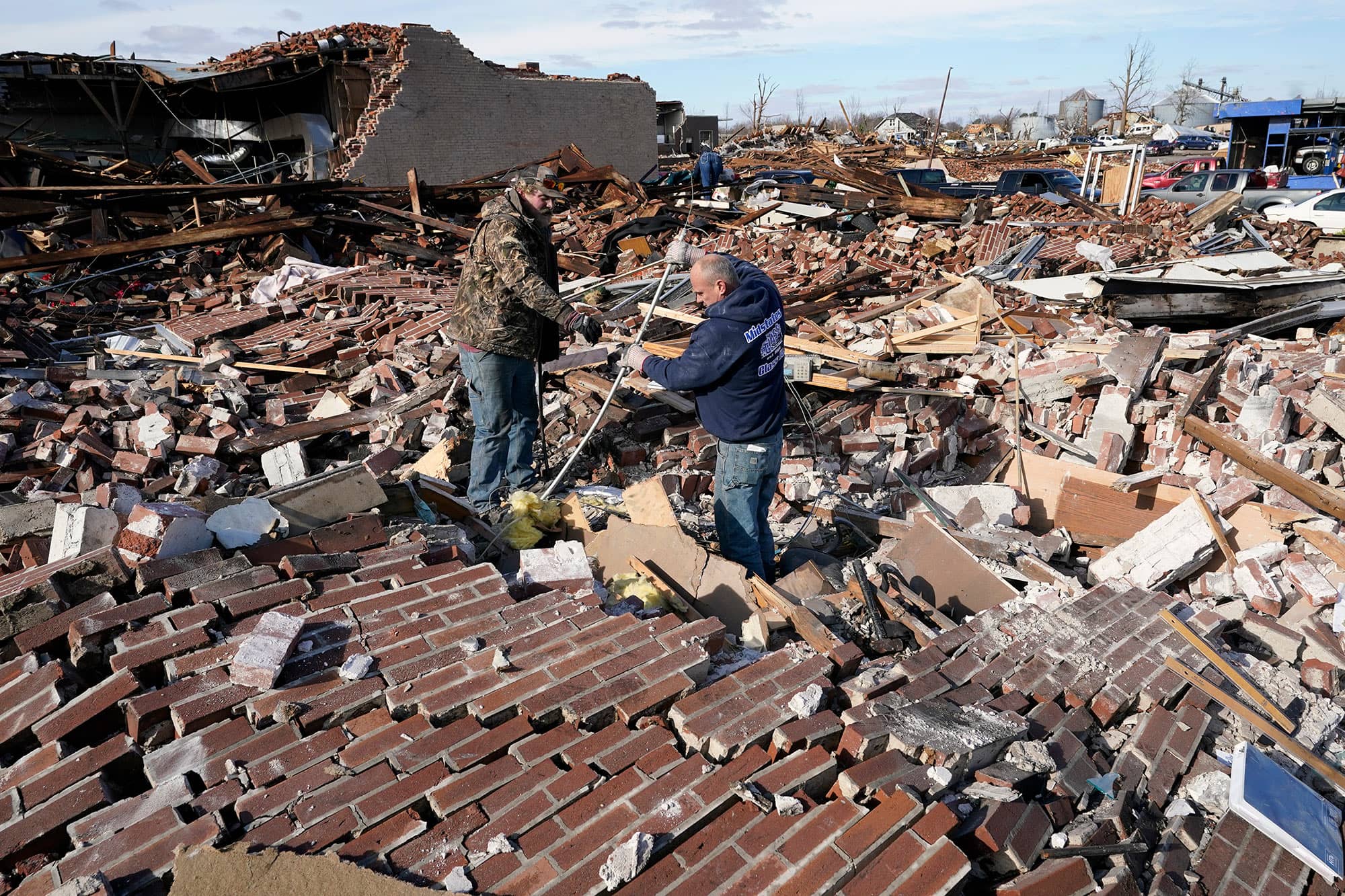
AP Photo / Mark Humphrey
“The president’s message today is that he and the federal government intend to do whatever it takes for as long as it takes by providing any support that is needed to aid recovery efforts and to support the people of Kentucky,” White House deputy press secretary Karine Jean-Pierre told reporters. It’s an assurance the Biden administration has had to give out many, many times over the course of the president’s short time in office, after hurricanes, wildfires, and floods. But emergency management experts say that until the United States reforms its emergency management system from the ground up, sending the Federal Emergency Management Administration, or FEMA, out to clean up communities in the aftermath of disasters is akin to stanching a catastrophic injury with a Band-Aid. Ultimately, it’s unsustainable.
Right now, the federal government responds to disasters with FEMA’s muscle. A disaster occurs, and FEMA comes in to repair the damage and dole out disaster aid. Meanwhile, states and municipalities haven’t done the work required to prepare for these events, mitigate damage and loss of life, and chart out a course for recovery ahead of the event. In many cases, towns don’t have the resources they need to make those plans or the know-how to access the federal grant money that exists to help them recover from extreme weather. In the view of experts Grist spoke to, this month’s tornadoes are more proof that the status quo isn’t working.
“Until local agencies have their capacity substantially expanded in essentially every community across the country, we’re going to keep running into problems,” Sam Montano, an assistant professor of emergency management at the Massachusetts Maritime Academy, told Grist. “Either local governments can start funding them, state governments can start funding them, or the federal government can fund them. I don’t really care where the funding comes from, but that’s what needs to happen.”
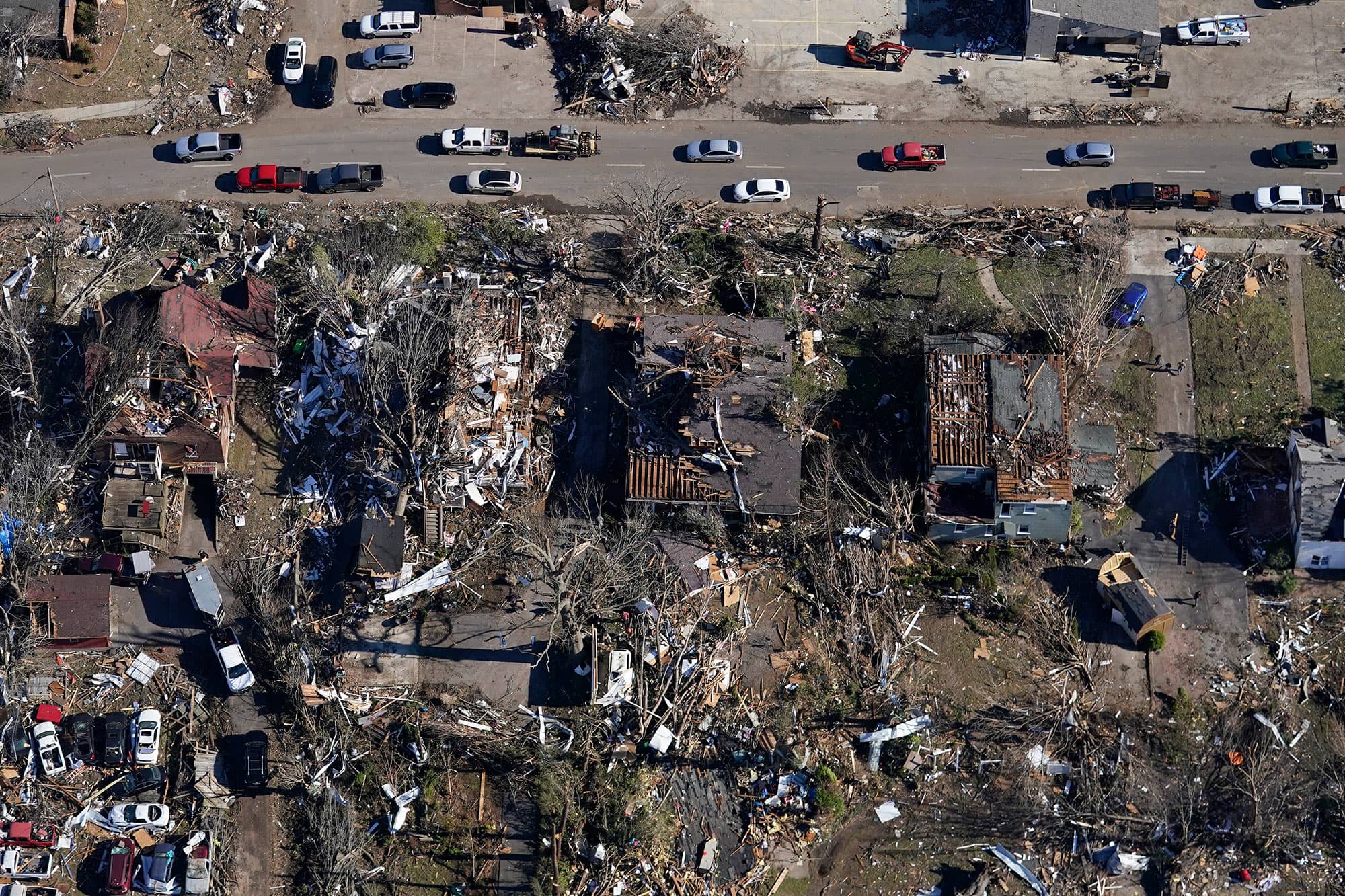
AP Photo / Gerald Herbert
Residents of Greensburg, Kansas, know exactly what people in Mayfield are going through right now. On a Friday night in May 2007, an EF5 tornado — the strongest designation a tornado can receive, meaning that it has winds over 200 miles per hour — struck Greensburg head on, killing nine people. When the sun rose on Greensburg Saturday morning, more than 90 percent of the town was gone. “From Main Street west, there was nothing but piles of rubble three feet high,” John Janssen, who was head of the Greensburg city council at the time and later became the mayor of Greensburg for 11 months during the peak of its recovery efforts, told Grist. “There wasn’t much you could identify.”
Instead of rushing to build Greensburg back to the way it was before the tornado hit, the Greensburg city council decided to build back better — and, surprisingly, greener. Three months after the disaster occured, Greensburg had published a long-term community recovery plan in collaboration with its county and FEMA. The plan established an office of Sustainable Development, which would be dedicated to building out renewable energy capacity and transforming Greensburg into a hub of sustainability in the middle of red-state Kansas. It established a Housing Resource Office that identified and applied for grants and loan programs and helped residents use those programs to rebuild and repair their homes. It revamped its building and zoning codes to encourage energy efficiency and tornado safety.
Money and resources flowed into Greensburg from nonprofit aid groups, private funders, the Department of Agriculture, and the Department of Energy. The president at the time, George W. Bush, had just emerged from a scandal in New Orleans two years prior, when FEMA severely botched the Hurricane Katrina recovery effort. Greensburg indirectly benefited from that disaster — FEMA money came raining down.
With help from Greensburg’s new Housing Resource Office, most homeowners rebuilt their homes stronger and more efficiently than before, with six-inch thick styrofoam walls reinforced with concrete. The thicker walls made houses cooler in the summer, warmer in the winter, and more resistant to tornado damage than the four-inch walls that were the norm in the 20th century. Homeowners also put in stronger roofs made of metal instead of shingles. Today, tornado shelters in Greensburg are plentiful; the Sustainable Comprehensive Plan recommended residents take advantage of FEMA funding for safe rooms and enhanced garage doors that help fortify basements, and many people did. Janssen built a safe room directly into his house.
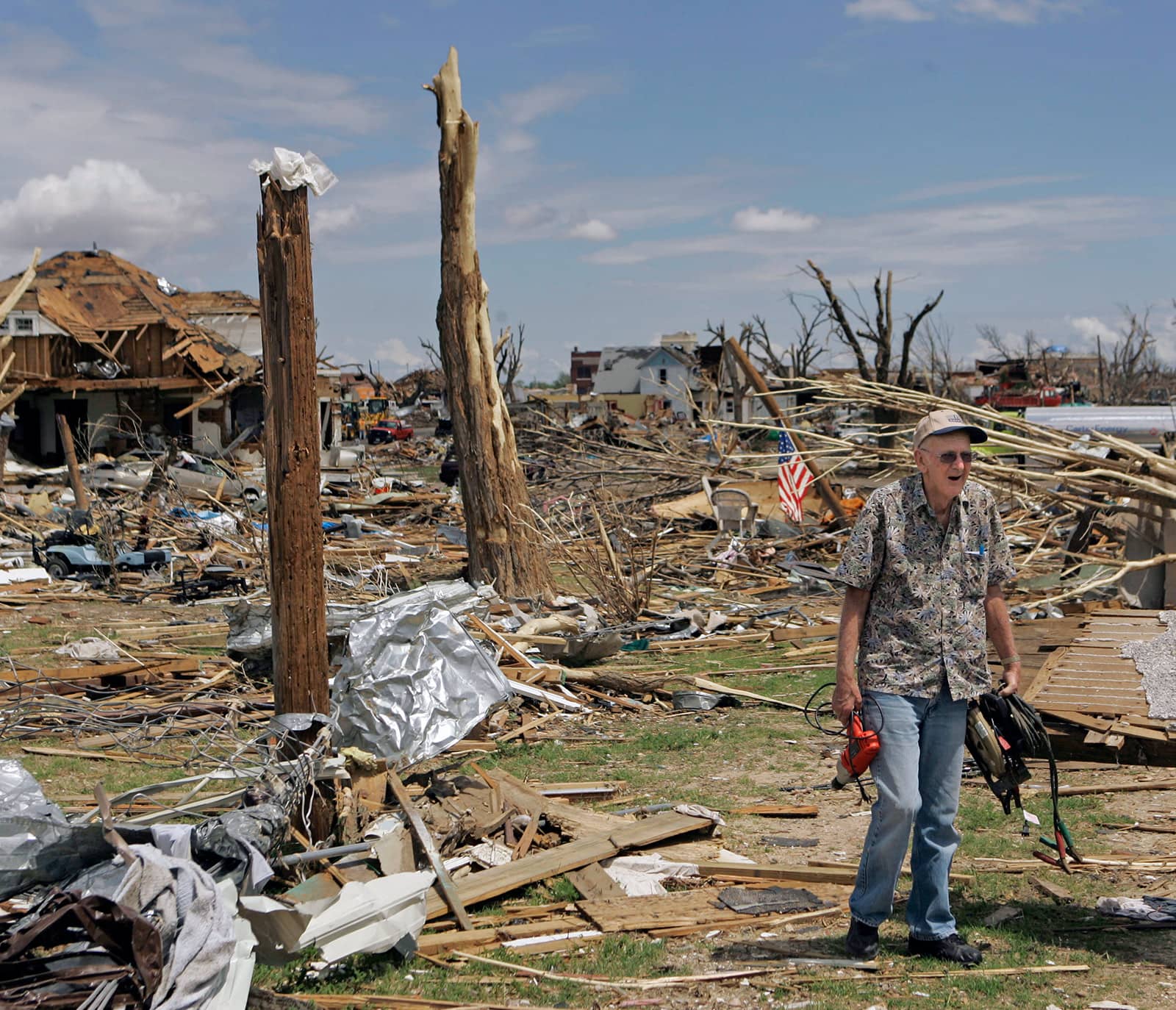
AP Photo / Charlie Riedel
Greensburg is not tornado proof. The town knows that even the best building materials can’t withstand an EF5. But it’s considerably safer than it once was. Other towns in tornado-prone areas need to do what Greensburg did, preferably before a tornado comes through and levels every structure in its path. But not every town has the resources and expertise to follow in Greensburg’s footsteps, even if they might want to. “It’s just crazy that there’s no blueprint, no expertise, no guidance to help towns,” Daniel Wallach, a Greensburg resident and former executive director of Greensburg Greentown, a nonprofit he co-founded after the tornado to help the town rebuild.
If the federal government did work with states to put together a blueprint to help towns prepare for tornadoes, emergency preparedness experts say it would include a few common-sense solutions that work best with ample communication between residents, local politicians, and local emergency managers. First, every town needs an emergency manager — someone whose job it is to prepare residents for disasters and coordinate recovery efforts after an event occurs. Right now, many towns don’t have room in their budget to hire a full-time emergency manager. Experts say local governments and states need to start prioritizing those positions, and the federal government needs to earmark funding for them if state or local funding doesn’t exist.
Next, municipalities need an effective emergency alert system in place to alert residents to extreme weather events — which is not always as simple as it sounds. Stephen Strader, a professor of geography at Villanova University, remembers attending an emergency management conference in Alabama a few years ago, where he suggested sending out tornado warning alerts to people’s cell phones to a local emergency manager. The manager “looked at me and he goes, ‘That would be great, except half of my county doesn’t have cellphone coverage,’” Strader said. “It made me realize that what’s going to work for one big city won’t work for a lot of places.” This is why it’s important for local officials to play an active role in emergency preparedness, instead of leaving it to the federal government. Following its tornado in 2007, Greensburg took advantage of the National Weather Service’s Storm Spotter training sessions, which trained volunteers how to spot severe weather events. Greensburg taught residents what to pack in their go-bags and where to evacuate to.
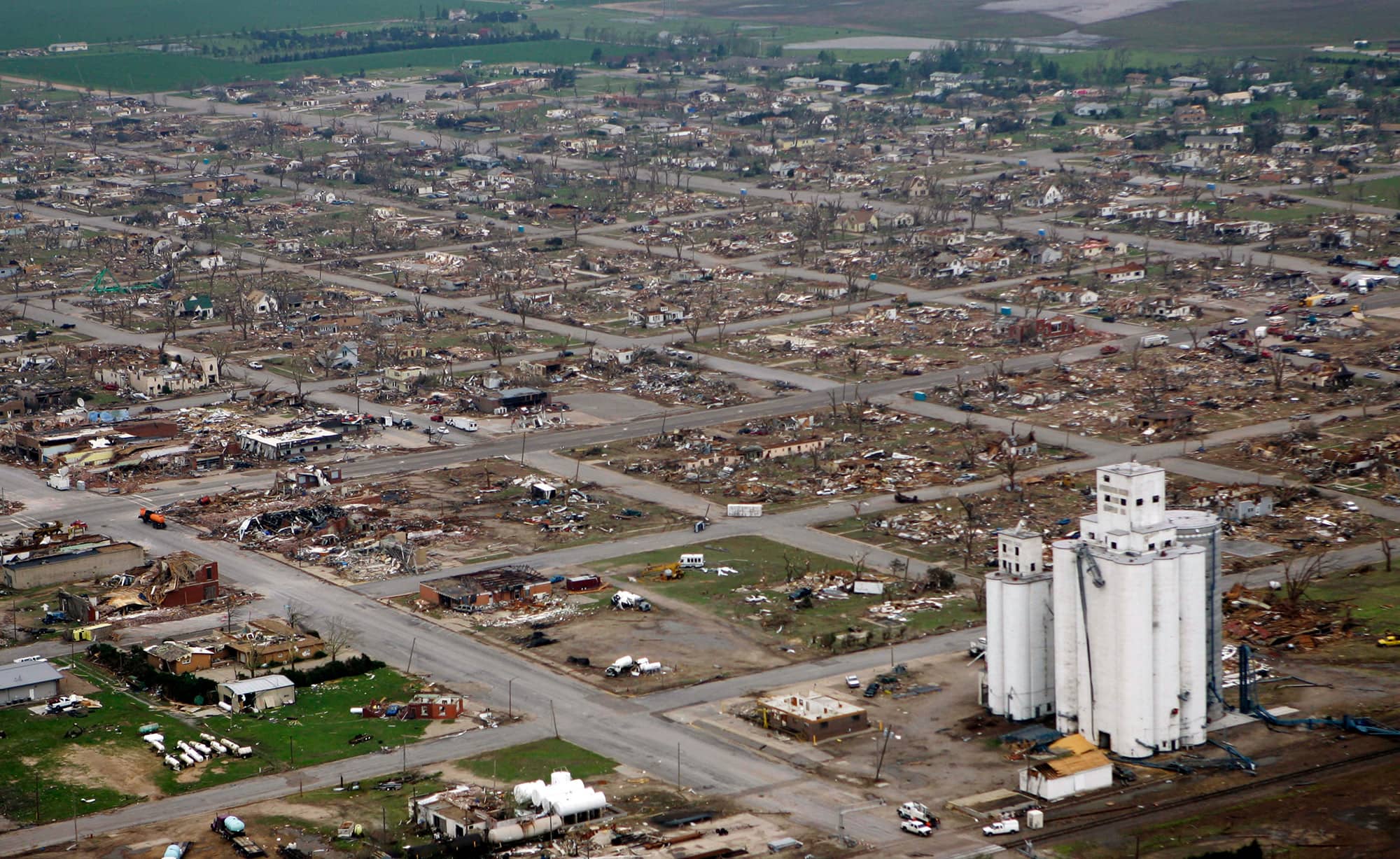
AP Photo / Orlin Wagner
The next step is the most straightforward: everyone who lives in tornado country needs to have access to a safe place to shelter. But some places don’t have tornado shelters due to lack of funds. “We have to provide programs and tax dollars for people to have shelters, particularly in places where they don’t have basements or can flee their homes,” Strader said. Cities and towns should build public tornado shelters, and homeowners should have access to grants to reinforce their basements or build tornado shelters into their homes.
Another way local governments could keep people safe during tornadoes would be to implement smarter building codes that require people to build stronger and more resilient houses, like Greensburg did, and incentives for homeowners of mobile homes to anchor their units into the ground. Eric Holdeman, former emergency management director for King County, Washington, told Grist that building codes are key to preventing damage during all kinds of extreme weather events. People who live in substandard housing in the U.S., frequently low income and minority communities, have to bear the brunt of these increasingly frequent and intense disasters. Policies that require a certain standard for new buildings and policies that mandate retrofits of existing residential structures would help alleviate some of that burden. “We’re letting people put themselves in danger,” Holdeman said, “and they’re in danger sometimes only based on where they can afford to live and the quality of housing they have.”
It would be great if every town could make the investments Greensburg made. But right now, a federal program to help communities prepare for disasters doesn’t really exist.
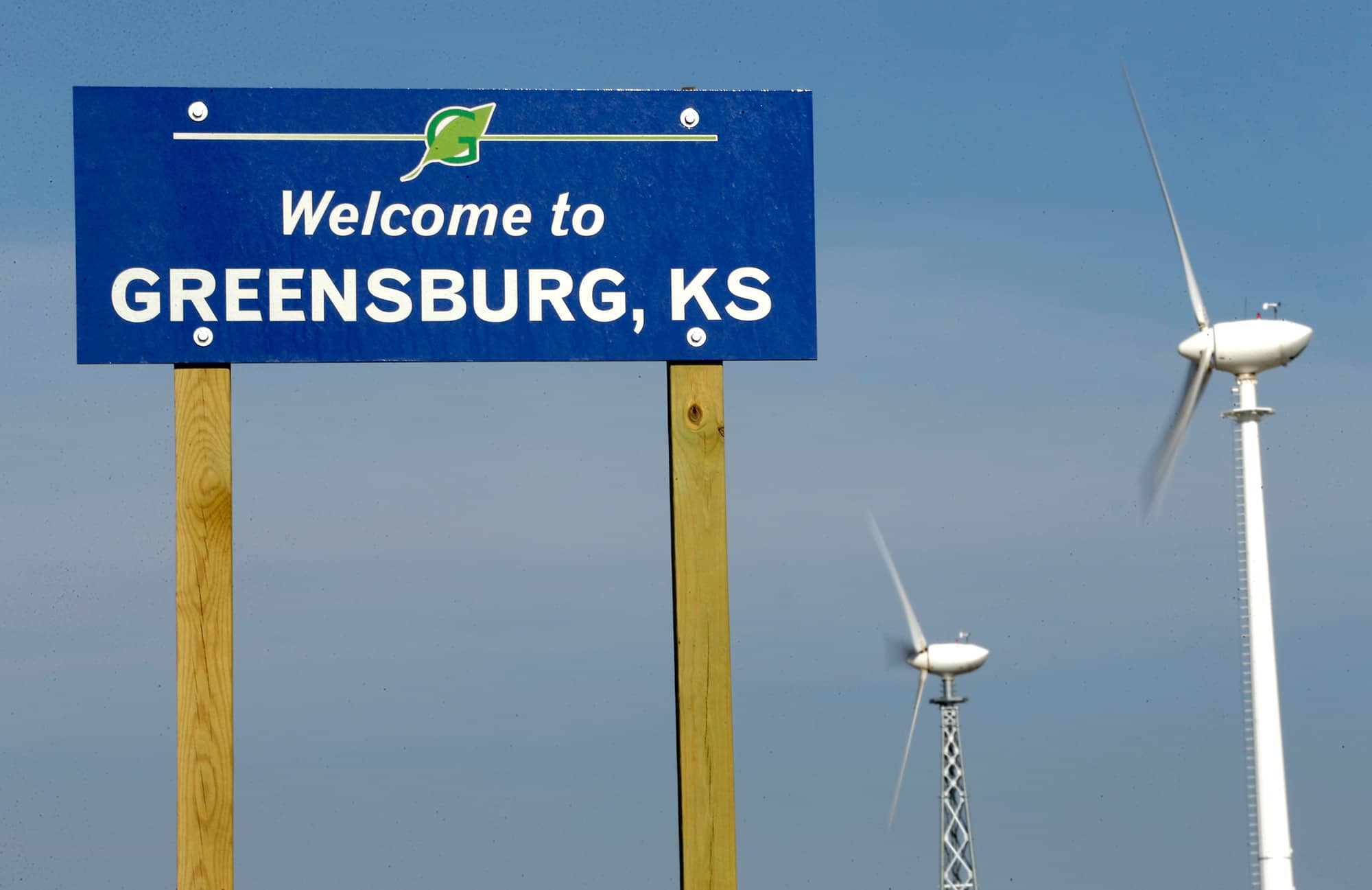
AP Photo / Charlie Riedel
FEMA used to administer a program called Project Impact, a $25 million initiative started in 1997 that ran until George Bush’s administration cut it in 2001. It gave out grants to communities seeking to prepare themselves for extreme weather events. Manhattan, Kansas, is one of the communities that used Project Impact funds to prepare for tornadoes. When a massive tornado struck the town in 2008, people ran into tornado shelters the program helped fund. “I’m sure it saved lives,” Dori Milldyke, the former director of Project Impact, said in a 2009 interview with the site Govtech. “One couple lived by hiding in their shelter under their concrete steps. Others found safe refuge in group safe rooms built in mobile home parks. And others knew where to grab the safest improvised shelter, following our Project Impact preparedness tips.”
FEMA administers a program now called Building Resilient Infrastructure and Communities, or BRIC. The bipartisan infrastructure bill that Biden signed into law in November directs billions more dollars to FEMA for resilience work. But BRIC is directed toward communities that have already experienced a major disaster, and it still isn’t funded at the scale necessary to ensure every community that needs it can access funds. More importantly, some places don’t have the know-how to apply for those funds in the first place.
“We know that there are disparities in which communities are getting those dollars,” Montano said. A community that has a dedicated emergency manager is more likely to be able to tap into the federal government’s disaster aid programs. Communities without an emergency manager are far less likely to be able to get the help they need. “They don’t have the knowledge, the staff, and the expertise to even be able to apply for those mitigation grant programs,” Montano said.
Until towns are equipped with the tools they need to prepare for disasters and recover from them in smarter ways, tornadoes and other disasters will continue to destroy communities. Add climate change into the mix, and it’s clear that without serious emergency management reform, people will continue to die in events that could have been less catastrophic with the right planning. “If we don’t do that, we’re going to be stuck in this cycle,” Strader said. “We’re doomed.”
This story was originally published by Grist with the headline December’s tornadoes show a country desperately in need of disaster reform on Dec 22, 2021.